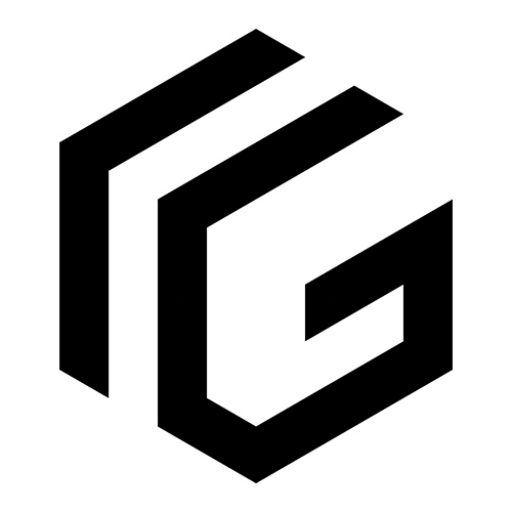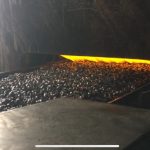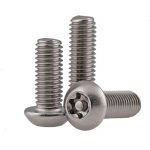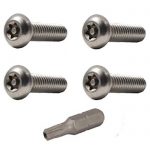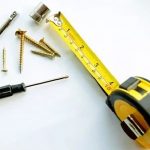Knowing the different screw types and sizes is helpful, but to accurately select the right screw for your project, you’ll likely need to know a little about how screw threads work, as well. So, how do screw threads work? Like the screws themselves, screw threads are designed to meet the needs of specific applications.
Most commonly referred to as machine screw threads, screws of this style are designed to align with a threaded nut or hole with a matching diameter and thread count. They use Unified Thread Standard (UTS), and are generally available in UNC (Unified National Coarse) and UNF (Unified National Fine) options. Sizes below 1/4″ use numbers to describe their diameter, while screws 1/4″ and higher use fractions. Their sizes are described first with the diameter, followed by a hyphen, and then with the count of threads per inch. (Examples: 4-40, 12-24, 5/16-18)
Metric Machine Screws are notated in metric diameter and thread pitch. Pitch is the distance, in millimeters, between threads.
Below are the metric screw and bolt sizes that we carry:
| M1.6-0.35 | M2-0.4 | M2.5-0.45 | M3-0.5 | M3.5-0.6 |
| M4-0.7 | M5-0.8 | M6-1.0 | M7-1.0 | M8-1.25 |
| M10-1.5 | M12-1.75 | M14-2.0 | M16-2.0 | M18-2.5 |
| M20-2.5 | M24-3.0 |
| Screw Size | UNC | UNF |
| #0 | 0-80 | |
| #1 | 1-64 | 1-72 |
| #2 | 2-56 | 2-64 |
| #3 | 3-48 | 3-56 |
| #4 | 4-40 | 4-48 |
| #5 | 5-40 | 5-44 |
| #6 | 6-32 | 6-40 |
| #8 | 8-32 | 8-36 |
| #10 | 10-24 | 10-32 |
| #12 | 12-24 | |
| 1/4″ | 1/4-20 | 1/4-28 |
| 5/16″ | 5/16-18 | 5/16-24 |
| 3/8″ | 3/8-16 | 3/8-24 |
| 7/16″ | 7/16-14 | 7/16-20 |
| 1/2″ | 1/2-13 | 1/2-20 |
| 9/16″ | 9/16-12 | 9/16-18 |
| 5/8″ | 5/8-11 | 5/8-18 |
| 3/4″ | 3/4-10 | 3/4-16 |
| 7/8″ | 7/8-9 | 7/8-14 |
| 1″ | 1-8 | 1-14 |
| 1 1/8″ | 1 1/8-7 | 1 1/8-12 |
| 1 1/4″ | 1 1/4-7 | 1 1/4-12 |
| 1 3/8″ | 1 3/8-6 | 1 3/8-12 |
| 1 1/2″ | 1 1/2-6 | 1 1/2-12 |
External Threads: External threads (ie: male threads) mean the threads are on the bolts or screws. Threads are sometimes on the nuts rather than the bolts or screws.
Internal Threads: Internal threads (ie: female threads) mean the threads are on the nuts rather than the bolts or screws.
Machine Screw Threads: Machine screw threads are unique in that they are specially designed to mate with threads on nuts or threads present in tapped holes. Not self-tapping threads.
Spaced Threads: Spaced threads are designed to form their own threads in pre-drilled holes. You’ll most often find spaced threads on self-tapping, wood and coach screws.
Lag Screws: Lag screws are just one example of screws that form their own thread in pre-drilled holes. Typically, coach screws are used to fasten metal to wood.
Self-Tapping Screws: Self-tapping screws are threaded to create their own holes when installed. They form a matching thread in whatever material they are installed into. This makes using self-tapping screws incredibly efficient.
Thread-Forming Screws: Used with plastic materials, thread-forming screws feature two separate threads: one high and one low. This makes the pullout strength higher while also ensuring plastic does not crack or otherwise break.
Type U Screws: Type U screws include an unusual spiral thread that is most often driven with a hammer into materials like plastic and metal casings.
Wood Screws: Wood screws feature a tapered shank with sharp threading.
